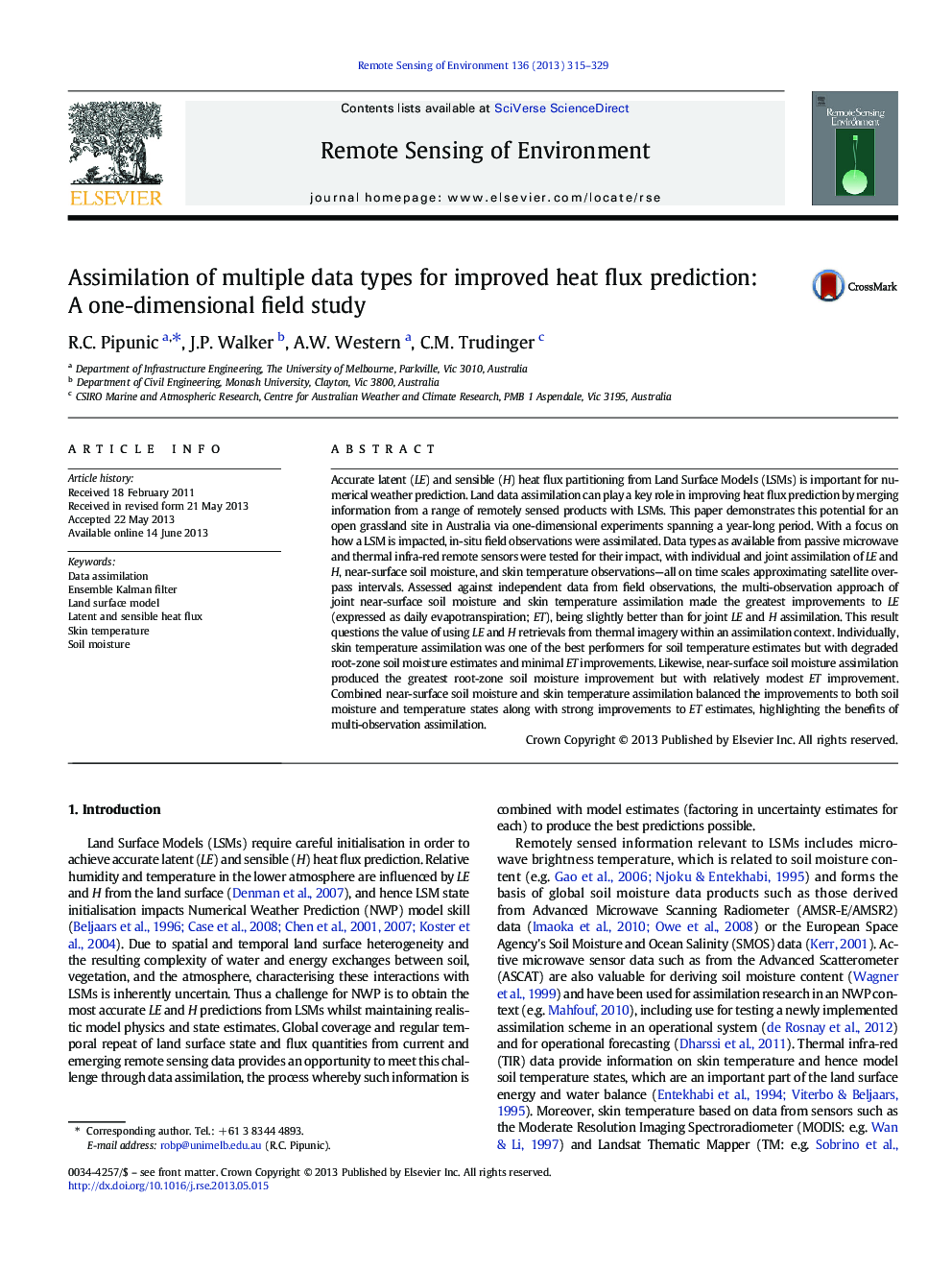| Article ID | Journal | Published Year | Pages | File Type |
|---|---|---|---|---|
| 6347423 | Remote Sensing of Environment | 2013 | 15 Pages |
Abstract
Accurate latent (LE) and sensible (H) heat flux partitioning from Land Surface Models (LSMs) is important for numerical weather prediction. Land data assimilation can play a key role in improving heat flux prediction by merging information from a range of remotely sensed products with LSMs. This paper demonstrates this potential for an open grassland site in Australia via one-dimensional experiments spanning a year-long period. With a focus on how a LSM is impacted, in-situ field observations were assimilated. Data types as available from passive microwave and thermal infra-red remote sensors were tested for their impact, with individual and joint assimilation of LE and H, near-surface soil moisture, and skin temperature observations-all on time scales approximating satellite overpass intervals. Assessed against independent data from field observations, the multi-observation approach of joint near-surface soil moisture and skin temperature assimilation made the greatest improvements to LE (expressed as daily evapotranspiration; ET), being slightly better than for joint LE and H assimilation. This result questions the value of using LE and H retrievals from thermal imagery within an assimilation context. Individually, skin temperature assimilation was one of the best performers for soil temperature estimates but with degraded root-zone soil moisture estimates and minimal ET improvements. Likewise, near-surface soil moisture assimilation produced the greatest root-zone soil moisture improvement but with relatively modest ET improvement. Combined near-surface soil moisture and skin temperature assimilation balanced the improvements to both soil moisture and temperature states along with strong improvements to ET estimates, highlighting the benefits of multi-observation assimilation.
Related Topics
Physical Sciences and Engineering
Earth and Planetary Sciences
Computers in Earth Sciences
Authors
R.C. Pipunic, J.P. Walker, A.W. Western, C.M. Trudinger,
